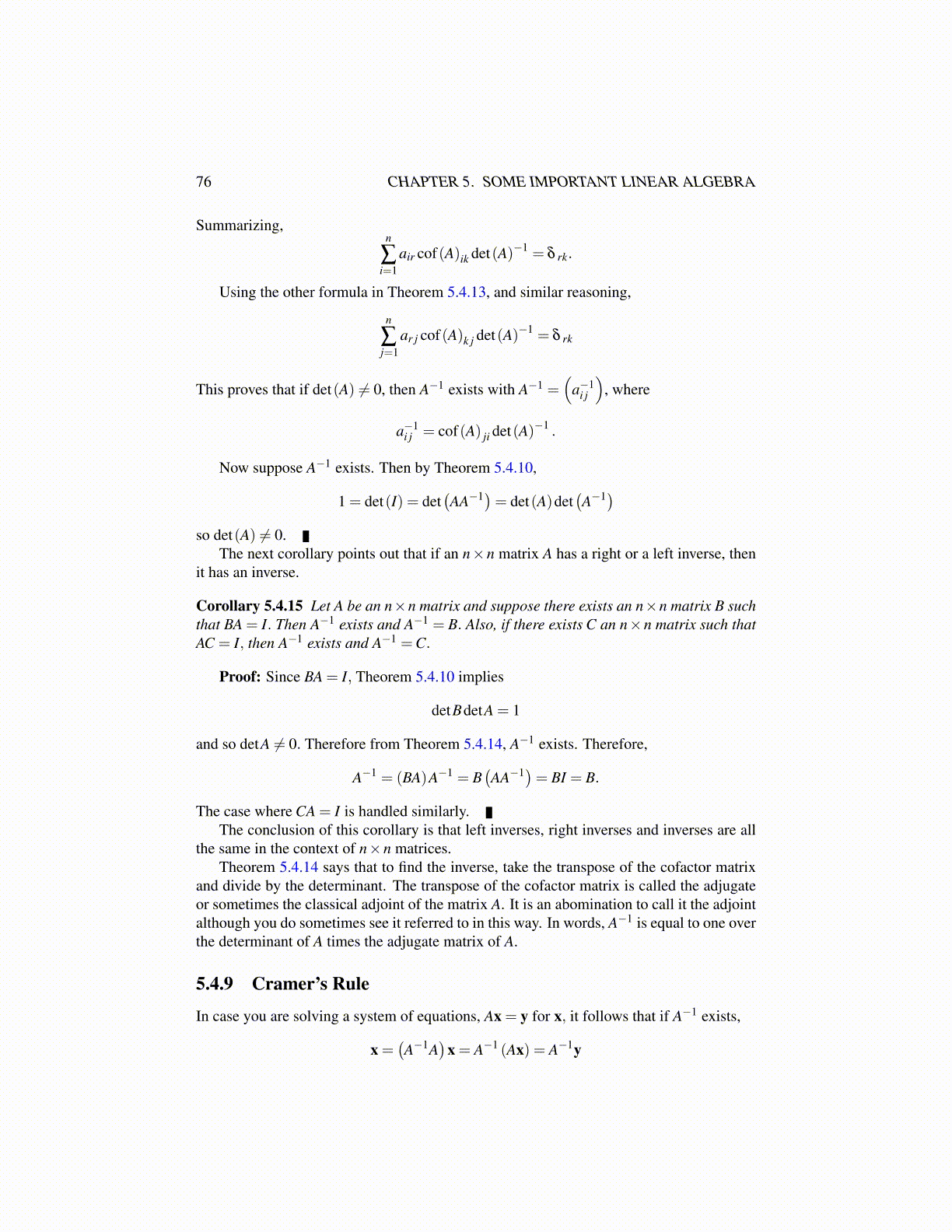
76 CHAPTER 5. SOME IMPORTANT LINEAR ALGEBRA
Summarizing,n
∑i=1
air cof(A)ik det(A)−1 = δ rk.
Using the other formula in Theorem 5.4.13, and similar reasoning,
n
∑j=1
ar j cof(A)k j det(A)−1 = δ rk
This proves that if det(A) ̸= 0, then A−1 exists with A−1 =(
a−1i j
), where
a−1i j = cof(A) ji det(A)−1 .
Now suppose A−1 exists. Then by Theorem 5.4.10,
1 = det(I) = det(AA−1)= det(A)det
(A−1)
so det(A) ̸= 0.The next corollary points out that if an n×n matrix A has a right or a left inverse, then
it has an inverse.
Corollary 5.4.15 Let A be an n×n matrix and suppose there exists an n×n matrix B suchthat BA = I. Then A−1 exists and A−1 = B. Also, if there exists C an n×n matrix such thatAC = I, then A−1 exists and A−1 =C.
Proof: Since BA = I, Theorem 5.4.10 implies
detBdetA = 1
and so detA ̸= 0. Therefore from Theorem 5.4.14, A−1 exists. Therefore,
A−1 = (BA)A−1 = B(AA−1)= BI = B.
The case where CA = I is handled similarly.The conclusion of this corollary is that left inverses, right inverses and inverses are all
the same in the context of n×n matrices.Theorem 5.4.14 says that to find the inverse, take the transpose of the cofactor matrix
and divide by the determinant. The transpose of the cofactor matrix is called the adjugateor sometimes the classical adjoint of the matrix A. It is an abomination to call it the adjointalthough you do sometimes see it referred to in this way. In words, A−1 is equal to one overthe determinant of A times the adjugate matrix of A.
5.4.9 Cramer’s Rule
In case you are solving a system of equations, Ax = y for x, it follows that if A−1 exists,
x =(A−1A
)x = A−1 (Ax) = A−1y